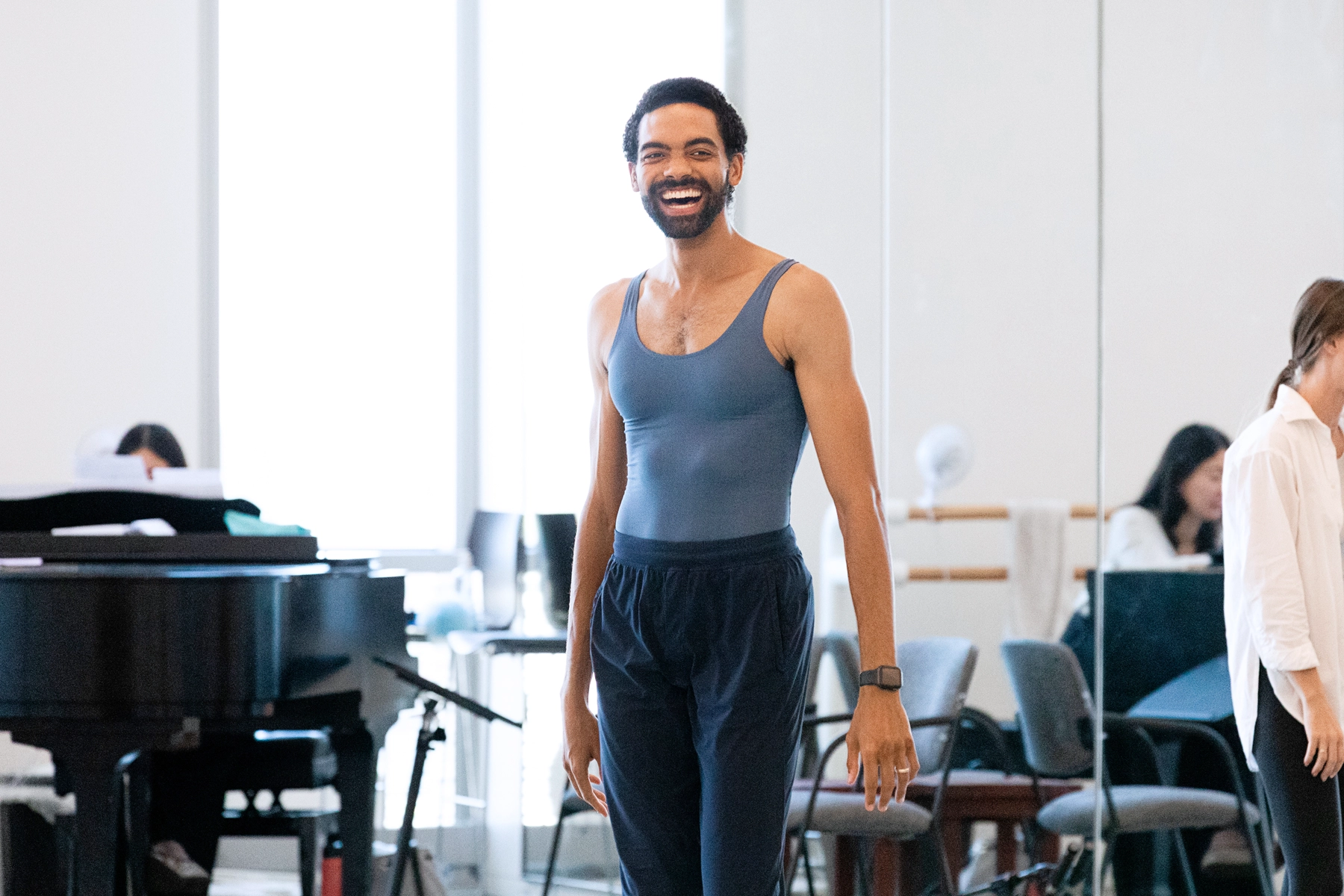Silas Farley tends to stay busy. The former dean of the Trudl Zipper Dance Institute at the Colburn School in Los Angeles is now based in Dallas, Texas, where he is the Armstrong Artist in Residence in Ballet at Southern Methodist University’s Meadows School of the Arts. In addition, he teaches at the School of American Ballet, serves on the board of The George Balanchine Foundation, and is the host of the Hear the Dance podcast at New York City Ballet, where he was a dancer until 2020. He also choreographs: Following the success of his elegant but minimalist Rococo Variations, Op. 33 for Houston Ballet’s 2022 Jubilee of Dance, the company will premiere a new one-act ballet by Farley September 19–29 at the Wortham Center. Four Loves features a commissioned score by Kyle Werner and marks the multi-hyphenate’s largest choreographic project to date.
Your pièce d’occasion was such a crowd and company favorite; I am not surprised to find you back at Houston Ballet.
I was thrilled to be invited back by Julie Kent and Stanton Welch to do something expansive, in that this is a full 30-minute ballet with upwards of 20 dancers. I wanted to do something that was very much in the classical language because that’s what I love choreographing, and that is what the Houston Ballet dancers are so masterful in bringing forth onstage.
What was your starting point for the new ballet?
I was talking with the composer, Kyle Werner, about what would make sense for us to do as a collaboration. We both love C.S. Lewis, in particular a book called The Four Loves. There is a chapter for each type of love: storge (familial love), philia (friendship), eros (romantic love), and agape (spiritual love). We thought that those four containers would be a great organizing principle for a large-scale ballet. It’s not expressly narrative but has that through line. It’s like a cosmic daughter of The Four Temperaments.
Kyle Werner has been your frequent collaborator.
Yes, this is our fifth work together. He’s like my brother; we met through our church. We sat down and it was like we had known each other forever. We have similar artistic goals, academic rigor, and spiritual loves. We love classical traditions and our voices as artists embrace that tradition with a sense of renewal.
How would you describe your studio creation practice?
I like to have a grasp of the music before I go into the studio. I will make charts with all of the counts, and I will have that mapped out for each section and that will guide and anchor me. And I will usually come in with some choreographic landmarks that can serve as a point of departure. I will have some big passages of movement that I can play around with, but the rest happens in the magical alchemy of the studio.
What did you learn from your time as dean at Colburn?
Colburn was an invaluable experience for me. I had so much support, but after the first year it showed me that I was not temperamentally suited to be a dean. It’s an administrative role. I am so glad that I did it because it showed me where my gifts really lie and where I can be of the best service. I learned so much. I got to work with extraordinary leaders in the arts world. I got a bigger picture of the arts world and a deeper appreciation of what it takes to foster a dance community.
You are a Texan now!
Texas is family. My wife is from Dallas; we have deep Texas connections. SMU is a great fit. I love getting in the weeds of teaching ballet every day. My students are BFAs and they bring a hunger to learn in a physical way, but also with a deep curiosity about the history and evolution of ballet, how it relates to the other art forms and other disciplines. It’s an inspiring place to get to go to work every day. And I have a wonderful mix of stability and flexibility; it’s on the academic calendar, so I get the summer off and so much support to leave and do other projects.
You also find time to host the Hear the Dance podcast at NYCB.
I write it, I host it, and I select the guests. I am grateful that they let me do my thing. It’s been a wonderful venue to nerd out with my ballet heroes.
What do you see as your role in the future of ballet?
The art form is alive and well. It’s so vibrant. People are devoted to this art form; they are investigating its possibilities. It’s a potent movement language. I hope to be helping to move it forward on all fronts.

